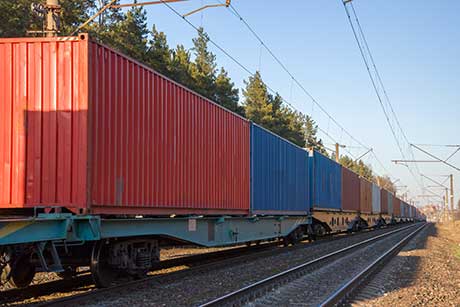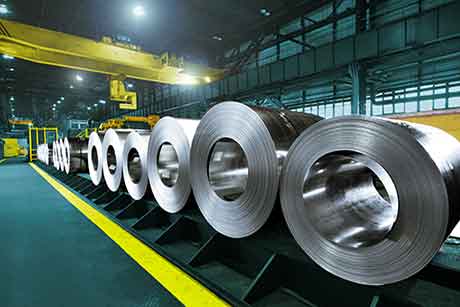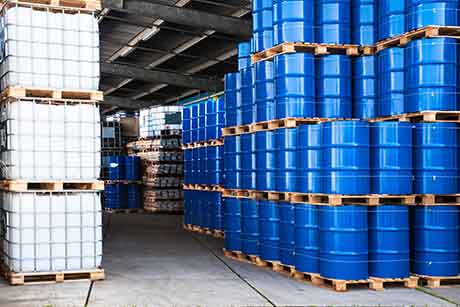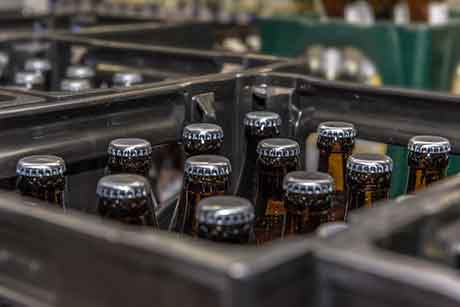- Home
- Container & Transport
Dehumidification without hermetic sealing
ThoMar as a reliable partner for the public sector
Various supply centres, battalions and service centres have already been impressed by the effectiveness and practicality of our SeaDry container desiccants manufactured in Germany. In particular, the SeaDry Pole Horizontal 1,200 g product variant is regularly used by various organisations in containers used as storage rooms and also in vehicles. And the SeaDry Blanket 1,500 g product variant, which can be placed directly on packaged goods and merchandise, has repeatedly been used for moisture protection during container transport.
Corresponding supply articles for the German armed forces are listed under the NCAGE code CM866:
- SeaDry Pole Horizontal 750g, with hook, hangs horizontally, with protective casing
(VersNr 6850-12-394-2721 / Teilekennzeichen 6850-0071-5) - SeaDry Pole Horizontal 1,200g, with hook, hangs horizontally, with protective casing
(VersNr 4440-12-415-8933 / Teilekennzeichen 6850-0071-8) - SeaDry Pole Horizontal 1,500g, with hook, hangs horizontally, with protective casing
(VersNr 6850-12-394-2722 / Teilekennzeichen 6850-0071-4) - SeaDry Pole Vertikal 1,000g, with hook, hangs vertically, with protective casing
(VersNr 4440-12-415-8934 / Teilekennzeichen 6850-0071-9) - SeaDry Pole Vertikal 1,200g, with hook, hangs vertically, with protective casing
(VersNr 4440-12-415-8935 / Teilekennzeichen 6850-0071-10) - SeaDry Hook 1.200 g, with hook, hangs vertically, with adhesive
(VersNr 4440-12-409-9690 / Teilekennzeichen 6850-0071-7) - SeaDry Single 125 g, bag, compact dimensions
(VersNr 4440-12-415-8937 / Teilekennzeichen 6850-0071-12)
(VersNr 6850-12-394-2705 / Teilekennzeichen 6850-0071-1) - SeaDry Single 125 g, ADH, bag, with adhesive, compact dimensions
(VersNr 4440-12-415-8936 / Teilekennzeichen 6850-0071-11)
(VersNr 6850-12-394-2713 / Teilekennzeichen 6850-0071-2) - SeaDry Strip 750 g, ADH, chain, with adhesive, flexible positioning
(VersNr 6850-12-394-2717 / Teilekennzeichen 6850-0071-3) - SeaDry Blanket 1.500 g, blanket, lies directly on the goods / packaging
(VersNr 6850-12-394-2641 / Teilekennzeichen 6850-0071-6)
SeaDry is available in various shapes and sizes to suit your specific application.

ThoMar supplies public authorities with desiccants.
Moisture protection for sensitive electronics during transport
Challenge: High humidity during long-distance transport
During the transfer, which took a good 8 weeks in total, the container travelled through various climate zones with fluctuating temperatures and humidity levels. This posed a considerable risk to the loaded electronics, as even humidity levels above 50% can lead to corrosion damage to cables and components. The customer was looking for a solution to keep the relative humidity constantly low and thus ensure the functionality of the electronics. The packaging components also needed to be protected.
Solution: Combination of SeaDry and in-box desiccants
The company decided to use SeaDry Hook 1200g for protection. The desiccant was attached to the lashing eyes on the container walls to prevent condensation. In addition to this load securing measure for the entire container, inbox desiccants were integrated within the packaging on the pallets to ensure maximum moisture protection.
Result: Safe transport and complete protection of the electronics
The combined use of SeaDry plus inbox desiccant proved its worth - moisture was kept at a safe level throughout the entire transport. Both the electronic components and the packaging materials arrived at their destination without any damage. The economical use of SeaDry container desiccants was particularly convincing, as just 10 of them per 40-foot container were enough to reliably protect the entire load.
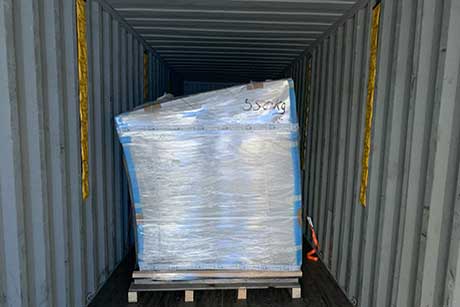
SeaDry protects electronics from moisture damage
Protecting textile goods during transport by container
Challenge: Moisture-sensitive textiles without individual packaging
The textiles were covered with foil in the cardboard packaging, but not individually packed in polybags. The customer's original idea of adding silica gel bags to the cartons turned out to be unsuitable, as silica gel is only effective in airtight packaging.
Solution: Use of SeaDry high-performance desiccants
ThoMar recommended the use of SeaDry Single 125g bags. These high-performance desiccants absorb seven times as much moisture compared to Silica Gel, providing optimum protection during the long sea journey.
Result: Prevention of moisture damage to textiles
By using SeaDry, moisture damage was avoided and the goods were delivered to the recipient safely and in perfect condition. This led to a high level of customer satisfaction and long-term confidence in the use of SeaDry for future shipments.
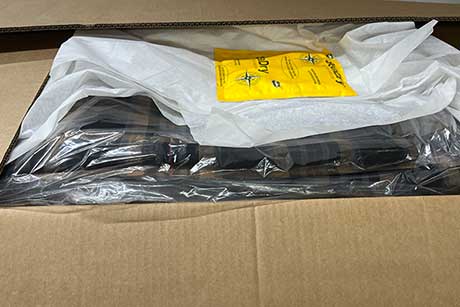
SeaDry protects textiles from moisture damage
How to protect relocation goods from moisture damage with desiccants
Here are some recommendations to ensure that your start in dreamland is not spoilt by mould, rust, mildew stains and a musty smell when you open the container.
- A combination of a high-performance desiccant (here: SeaDry on a salt-starch basis) - for use in the container - and a so-called inbox desiccants (here: CertiDry in accordance with DIN 55473 / contains clay granules) - for use inside the moving boxes - offers the best protection.
- Use packaging materials, such as moving boxes, in as dry a state as possible. Paper / cardboard binds moisture depending on the ambient climate; if necessary, dry in the boiler room beforehand.
- Line moving boxes with sturdy plastic film bags / bin liners, for example. Place the packaged goods together with CertiDry desiccant in accordance with DIN 55473 (type A, 4 DU or 8 DU, 1-2 bags per box). Seal the bags (squeeze out the air first) and moving boxes. Tape up the handle holes so that no further moist air can get in.
- Equip the container with SeaDry container desiccant before loading; the SeaDry Pole H 1.2 kg variant is particularly suitable for this application. Simply mount each piece with its hook on the lashing eyes along the long sides of the container (10 pieces per 20-foot container / 20 pieces per 40-foot container). Overseas shipments by private individuals often take three months or longer. With this amount of SeaDry, the removal goods remain safely protected until arrival.
- Place another box of unused SeaDry Pole H in the container. After arrival, check the saturation status of the suspended desiccants (check by weighing: one SeaDry Pole H is saturated at a weight of approx. 3.6 kg). If the house or flat is not yet ready for occupancy on arrival and the load has to remain in the container for longer, use additional SeaDry desiccants if necessary.
- All desiccants can be disposed of in the residual waste after your relocation project is completed.
SeaDry desiccants for containers and CertiDry desiccants in accordance with DIN 55473 are available in the ThoMar webshop or at Amazon.

Protect your household contents from damp when moving
Protect timber from moisture during transport
Challenge: Rising moisture levels during transport and storage
Our customer shipped kiln-dried sawn timber with an initial moisture content of 8–12%. After four weeks, the timber arrived with moisture levels of up to 45% due to the highly variable humidity inside the container during transport. The reason: timber naturally seeks equilibrium moisture and adjusts its own water content to match the surrounding climate. The beams positioned on the outside of the transport racks had absorbed particularly high amounts of moisture.
Solution: SeaDry as a high-performance desiccant for containers
To prevent moisture-related damage – such as the development of wood-destroying fungi – and avoid resulting complaints from recipients, the high-performance desiccant SeaDry, developed specifically for container use and manufactured by ThoMar in Germany, offers a simple and reliable solution. It provides effective moisture protection for both solid timber and engineered wood products during transport and storage.
Result: Controlled wood moisture and reliable product quality
Several timber-processing companies already use SeaDry successfully in their logistics processes. In the case described, the humidity remained within a safe range thanks to the use of SeaDry. The available standard formats, sizes and mounting options can be found in the SeaDry shop category. With our broad desiccant range, additional process steps and applications can also be reliably covered.

Sawn timber is also transported in containers
Protect special glass transports in containers from moisture
Challenge: Moisture damage to packaging components and auxiliary materials
At one of our customers, the resulting condensation led to mould growth on the wooden packaging components – which in turn caused a justified complaint from the recipient. In more severe cases, customs authorities may even refuse to release a container if packaging materials show visible mould. Moisture therefore poses not only quality and hygiene issues, but also logistical and financial risks.
Solution: Use of SeaDry high-performance desiccants in containers
To reliably prevent moisture-related damage to valuable glass products throughout the entire transport period, the high-performance desiccant SeaDry for use in containers, developed specifically for container use and manufactured by ThoMar, offers a proven and dependable solution. It binds large amounts of moisture and effectively prevents the formation of condensation.
Result: Protection against condensation with versatile application options
Several glass manufacturers already use SeaDry successfully in their logistics processes. The container desiccant is equally suitable for protecting porcelain, ceramic and enamel products during transport and storage. With various formats, sizes and mounting options available, SeaDry can be integrated flexibly. In addition, our broad range of desiccants allows further process steps and applications to be reliably covered.

Architectural and other special glass is also transported in containers
Prevent moisture damage to paper rolls during container transport
Challenge: Moisture absorption and loss of quality during transport
At one of our customers, condensation forming inside the container resulted in soaked sections on several paper rolls. These had to be removed before further processing at the recipient’s site in China – causing additional time, material loss and costs. Paper absorbs moisture extremely quickly and immediately loses its processability; even small damp areas can compromise entire roll batches.
Solution: Absorption of container humidity with SeaDry
To protect sensitive paper rolls throughout the entire transport period, the use of the high-performance SeaDry container desiccant, developed specifically for container applications and manufactured in Germany, is recommended. It sustainably reduces humidity inside the container, prevents condensation even on long transport routes exceeding 60 days, and effectively protects hygroscopic paper rolls from moisture damage.
Result: Dry paper rolls and reliable quality at the destination
Numerous companies in the paper and packaging industry already use SeaDry successfully in their global logistics chains. In the case described, moisture ingress was also reliably prevented. With various formats, sizes and mounting options available, SeaDry can be flexibly adapted to any transport configuration. In addition, ThoMar’s broad desiccant portfolio reliably covers further production and logistics steps.
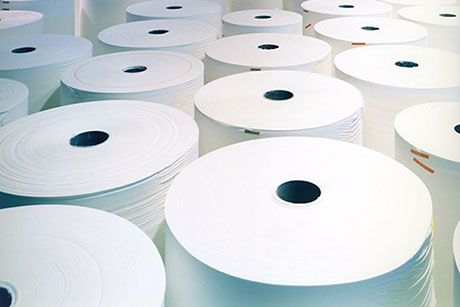
Paper rolls are transported in freight containers
Securing container transports on the New Silk Road against moisture
Challenge: Extreme climate fluctuations along the 10,000 km route
Unlike by sea, where the position of the container determines how exposed the cargo is to the elements, by rail the conditions are the same for all containers. The New Silk Road runs for a good 10,000 km not only across national borders, but also through different climate zones. Extreme temperature fluctuations and thus equally strong ups and downs in relative humidity favour the formation of condensation - and thus increase the risk of moisture damage.
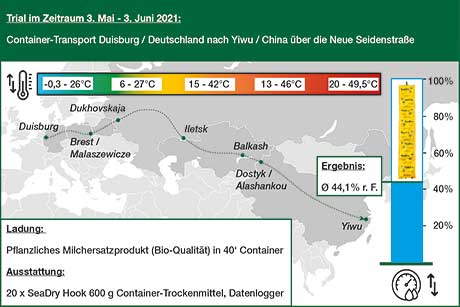
Thanks to SeaDry, the relative humidity remains below critical values and condensation does not occur.
Solution: Joint development of the desiccant concept
After analysing the requirements, the ThoMar product manager in charge recommended the use of twenty SeaDry Hook desiccant chains 600 g. These should always be distributed as evenly as possible in the container and can be attached to the lashing rings by means of a sturdy hook. The amount of desiccant required was determined on the one hand by the expected day and night temperatures typical for the time of year (May / June) in the areas passed through. On the other hand, a safety buffer was necessary concerning the absorption capacity, as the transfer on the Silk Road can be considerably prolonged by the rerouting to other gauges as well as by waiting times in the customs area. It had to be ensured that the desiccants could keep the relative humidity at a non-critical level during the entire transport period.
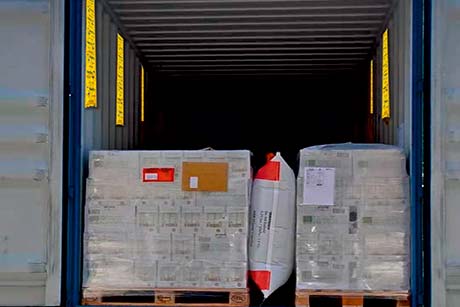
The load is protected during transport not only by desiccants but also by dunnage bags.
Result: SeaDry keeps your cargo dry
Thanks to the data logger used, the temperature and relative humidity could be precisely tracked. The progressions confirmed the precautionary measure of using desiccants during transport. The mould limit of 75% RH was not exceeded at any time, and on average the relative humidity was at an optimal 44.1%. The desiccant chains absorbed a total of 7.7 litres of water, about 60% of their own weight. Since the absorption capacity of SeaDry is at least 200%, there would have been sufficient reserves to ensure a longer transport time if necessary.

Evaluation of the data logger: Despite strong temperature fluctuations, the relative humidity during the experiment was only 44.1%.
Mould on Packaging and Packing Aids during the Transport of Machine Components
Challenge: Exceeded mould threshold and pre-contaminated packing materials
During the transport, the critical mould threshold was exceeded for extended periods. In addition, packaging materials and packing aids – particularly pallets and dunnage – showed elevated moisture levels and were already pre-contaminated before loading. The combination of these factors resulted in visible mould formation, making corrective action essential.
Solution: Combining suitable SeaDry container desiccants
Several SeaDry Pole H desiccant chains were evenly distributed and attached to the lashing rings inside the container, while compact SeaDry Single desiccant bags were placed inside the shipping crates. This setup ensured that the humidity level inside the container remained reliably below the critical threshold for mould growth.
Result: Long-term reduction of moisture damage and process optimisation
The use of desiccants prevented further exceedance of the humidity level at which mould develops. Visible moisture-related defects, such as darkened areas on the wood, were virtually eliminated. In addition, the company optimised its shipping preparation processes: for example, it now consistently uses kiln-dried wood, which has resolved the mould issue in the transport of machine components once and for all.
As a partner on equal footing, ThoMar supports its customers with decades of expertise in moisture control, transport logistics and desiccant technology – ensuring optimal results with cost-efficient solutions.
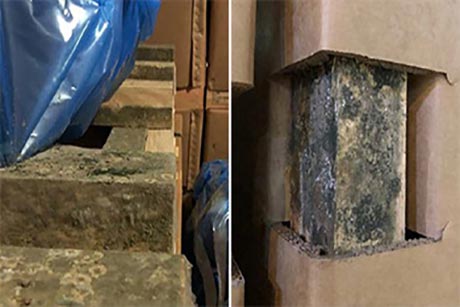
Mould formed on the packing aids
Metal industry: Prevent Corrosion on Steel Coils
Reaching a solution together
Our container desiccant SeaDry, on the other hand, consists of a salt binder mixture. Besides calcium chloride, starch is added to the desiccant bags to bind the water. The salt absorbs moisture from the ambient air and the starch ensures that the resulting liquid is bound to form a gel. This prevents water from leaking and the saturated desiccants can be easily disposed of.
For a test, our customer received precise instructions on how to proceed with the tested desiccants and data loggers after arrival at the destination. The relative water absorption capacity of our SeaDry products (over 200 % of their own weight) was much higher than that of the pure draining systems (approx. 125 %). This makes them cheaper to use than competing products. In addition, SeaDry offers greater safety by binding the absorbed water to form a gel. This means our customer benefits twice over.

Corrosion on metal coils
Corrosion and Musty Smell within Vehicles
The evaluations showed that during transport up to 80% relative humidity was reached in the vehicle interior. This led to odor development. In addition, the corrosion threshold was also regularly exceeded outside the vehicle in the container, which encouraged formation of rust. After our customer applied the desiccant chain SeaDry Strip ADH and the compact desiccant bag SeaDry Single, there were no further complaints from the recipient.

Photo composition: Car in container
Protect components of clamping devices for vehicle construction against moisture
Reaching a solution together
After a close coordination process between the customer and the ThoMar consultant in charge, the goods were packed in a customised aluminium composite bonnet, together with desiccant bags according to DIN 55473, and sealed airtight. In addition, desiccant blankets - SeaDry Blanket - were used to prevent possible mould growth on the wooden export crate used. For this purpose, the SeaDry Blankets were placed on the aluminium composite foil. ThoMar supplied the required desiccants, advised the customer on the required film wrapping and arranged the purchasing contact for this. Thus protected, the goods arrived at their destination in perfect condition.

Clamping device for vehicle construction in export packaging
Corrosion on Chemical Drums
In addition, the customer had used pallets with excessive moisture content and had also carried out loading in the open air. This resulted in container rain (condensation of excess humidity).
The use of the high performance desiccants SeaDry Blanket and SeaDry Single proved to effectively prevent corrosion. In order to enable an economically optimized use of desiccants, a weather-protected storage of the pallets as well as a weather-protected loading of the general cargo was organized. Subsequently, the use of SeaDry Single desiccant bags was no longer necessary.
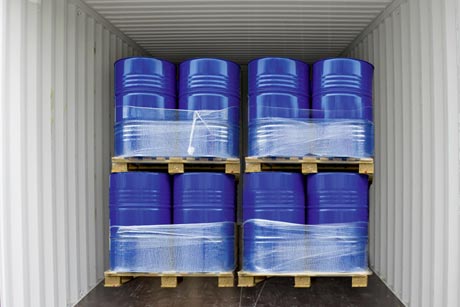
Photo composition: Chemical drums in sea container
Mould after Shipping Cornstarch Sacks
An analysis of the logistics process by the ThoMar consultant showed that the stowage plan and sequence of container loading in this individual case required the placement of a desiccant directly on the bagged goods. Here our customer decided on the desiccant SeaDry Blanket. To further reduce the risk of damage, the company now dispenses with the cover film on the pallets to allow air circulation in the pallet packaging. In addition, before stretching, the small SeaDry Single desiccant bags are placed in empty spaces in the packed pallets. Thanks to these measures, there was no further transport damage caused by moisture.
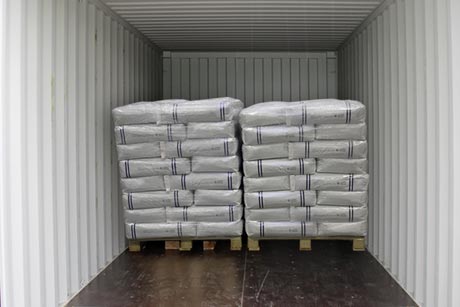
Photo composition: Starch sacks on pallets in freight container
Beverages: Sodden Cardboard Packaging
Reaching a solution together
Together with the company, we worked out a procedure with the aim of using desiccants in a more effective way. In principle, the temperature fluctuations between day and night can already be sufficient for the humidity in a freight container to repeatedly exceed a critical level. In addition, the analysis of the ThoMar consultant in charge revealed that the individual course of the packaging process in the specific case further favoured the formation of condensation in the packed sales containers.
To prevent moisture damage to the contents and packaging of the container cargo, our SeaDry container desiccant is a solution that is as simple as it is safe. In the case described, the choice fell on the variants SeaDry Blanket (desiccant blanket, e.g. for placement on stretched pallets) and SeaDry Single (compact desiccant bags for flexible positioning). The adaptation of the packing scheme on the pallets by the customer enabled a particularly effective application in terms of both effectiveness and economy.

Photo composition: Pallets with beverages in a container
Protecting Sensitive Metal Parts from Corrosion during Storage
To avoid any risk of damage in the first place, the customer hung several SeaDry Hook 600 g vertical desiccant chains from the lashing eyes in the container corrugations and used data loggers to monitor temperature and humidity throughout the entire storage period (March to June).
The measures have absolutely paid off. The container was exposed to direct sunlight during the day. The data logger recordings showed strong temperature fluctuations between -2.2° C and +43.9° C - this means a maximum risk of condensation! Nevertheless, the corrosion threshold in the container was not exceeded during the storage period: The average value was 37.3% relative humidity. For ThoMar, this result is proof that the SeaDry container desiccants, originally developed for the purpose of securing cargo during sea transport, are also highly effective in the area of storage.
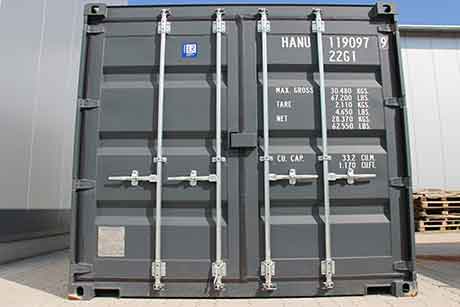
Container as interim storage
Protection against Moisture in Temporary Storage for all Kinds of Goods
An equally simple and effective solution to this problem is the use of container desiccants, such as SeaDry from ThoMar's range. With the coordinated mix of calcium chloride and starch, SeaDry desiccants draw moisture from the air like a sponge and store it safely inside the desiccant bags. SeaDry comes in various shapes and sizes, as well as with different attachment options - sure to suit your needs.
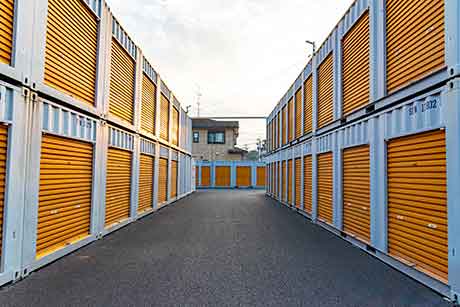
Self Storage Container Facility
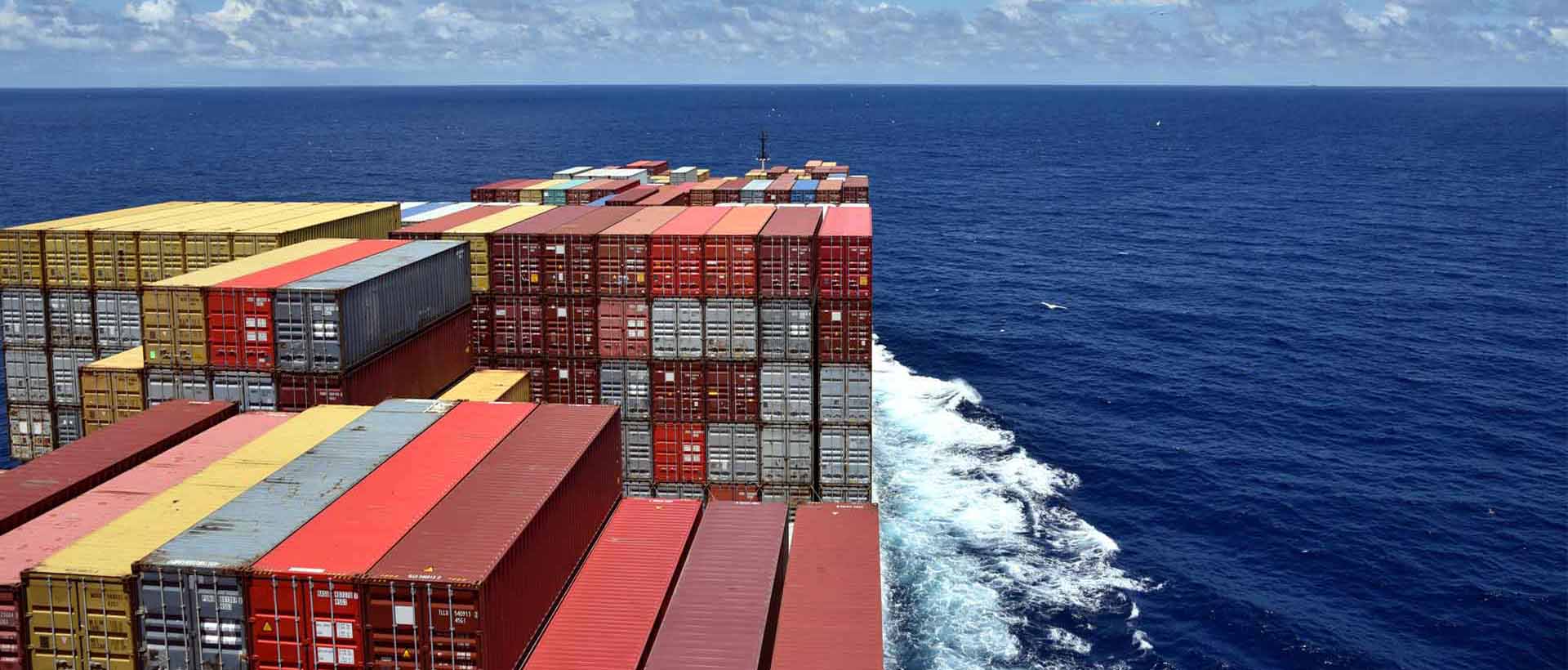
Do you transport your goods by sea container or do you use container transport by rail via the New Silk Road? The most important thing for you, as well as every exporter, is that the load arrives at your client as a whole and in one piece, isn't it? Stretch wrap, lashing straps, anti-slide mats, and further packing aids are used when securing cargo. Still you can never be sure what nasty surprise awaits the person opening the container at the port of arrival. High humidity and extremely fluctuating temperatures for weeks on end throughout the trip can damage the goods themselves, their wrapping, and the packaging aids. That might as well be each carrier's nightmare.
Or do you use containers as additional storage space, permanently or temporarily? Even the temperature fluctuations between day and night can be enough to cause the humidity in storage rooms to repeatedly exceed a critical level. Mould, rust and changes in the smell or taste of the contents and packaging of the stored cardboard boxes, big bags or general cargo are the possible consequences, just as with container transport.
If you've just been confronted with the unpleasant follow-up of a transport or storage damage due to too much moisture, rest assured: You are not alone. It doesn't matter if you produce cars, machinery parts, or metal coils, if you brew or bottle beverages and liquors, or if you manufacture apparel or leatherware. ThoMar OHG recommends the use of a long-term effective dehumidifier based on salt and starch. The salt attracts moisture from the ambient air, which is then immediately bound to a gel by the starch and cannot escape.
Our high performance container desiccant SeaDry was originally developed specifically for the use in sea containers, but is also ideally suited for rail transport. Furthermore, it protects stored goods against moisture damage. Clients from various industries, e.g. machine construction, automobile manufacturers, or the food industry, trust in the performance of SeaDry made by ThoMar. We provide solutions, not only products.



